Choosing the Best Sleeping Mat for Adventure Riding
Sleeping soundly in a tent has a number of challenges such as enduring noise from wind rustling, rushing rivers, rain, wildlife rummaging around your campsite and let’s not forget those noisy mates snoring like King Kong and waking you up even though you pitched your tent miles away from theirs!
An uncomfortable sleeping mat can be added to this list and is a sure-fire way to having a bad nights sleep. On the other hand, a good sleeping mat can help you sleep soundly and have you waking up the next morning fully refreshed and ready to tackle the upcoming trails.
Over the years I’ve tried a number of different brands and models of sleeping mats. The brand I now use is commonly regarded by numerous seasoned riders and general outdoor enthusiasts as one of the best on the market. The brand is Exped and model I use is in the DownMat series.
One of the early mats in this series I’ve used is the Exped DownMat 9. It has been around for years and still remains available due to it having great feedback from its users. The 9 in the name indicates the 9 cm thickness and as the name implies it is down filled which greatly increases warmth in cold conditions. I have used the Exped DownMat 9 sleeping mat on a number of riding trips over a number of years. It’s not the lightest sleeping mat weighing in at 998 grams however it is relatively compact, very warm and extremely comfy; even on undulated ground.

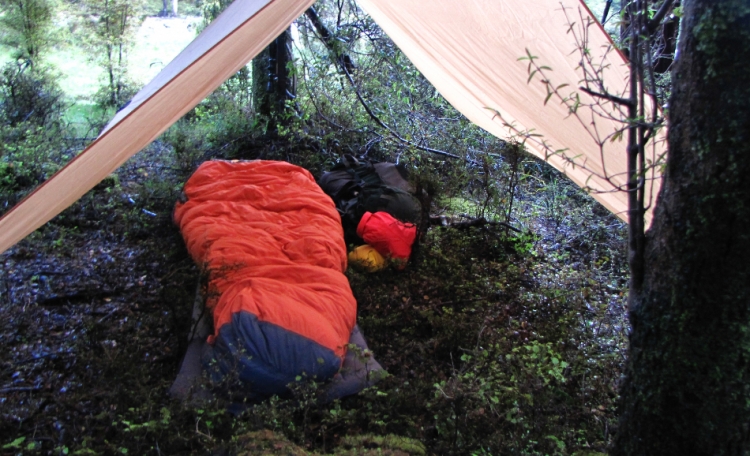
The Exped DownMat 9 has a pump built into the side of the mat and when the mat is new it works ok. Not great, just ok. As the mat gets older however, the spring back rate in the pump lessens and pumping it up becomes a time-consuming and mind-numbing process. This is really the only downfall to this mat, other than that it is very good.
While I could use a Schnozzle Pumpbag to pump up the DownMat 9 and avoid the inbuilt pump issue, I have shifted to an Exped DownMat UL 7 (UL stands for Ultra-Light) due to its more compact size and the fact it only weighs 490 grams.
The Exped DownMat UL is very similar to the Exped DownMat 9. It’s down filled, 7 cm thick, lightweight, compact, warm, comfortable, durable and comes complete with a Schnozzle Pumpbag. It is a perfect sleeping mat for adventure riding.
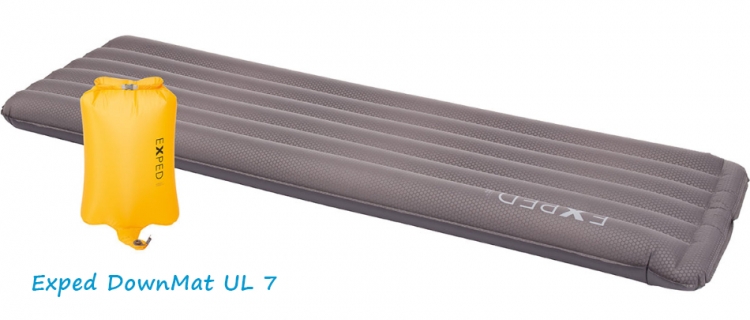
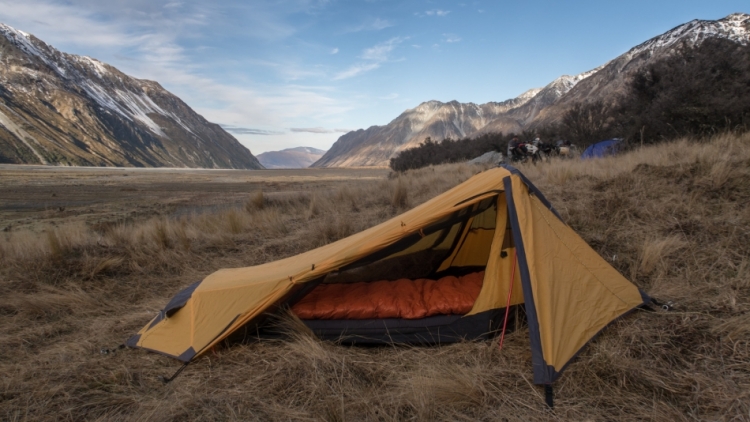
If you haven’t heard of or seen the Schnozzle Pumpbag, this is the best little gadget to save a truckload of time when inflating sleeping mats. You can inflate a sleeping mat with around four pumps in a matter of seconds. The Schnozzle Pumpbag weighs next to nothing and takes up minimal space. A brilliant thing indeed!
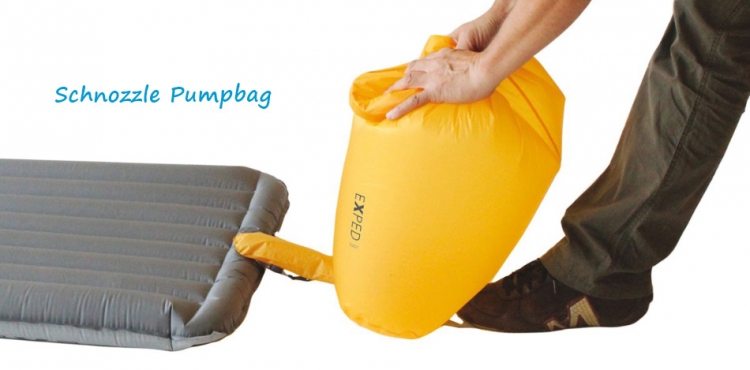
Thermarest Sleeping Mats
Another noteworthy sleeping mat producer popular with adventure riders is Thermarest. Thermarest have been around for years and are most commonly known for their self-inflating sleeping mats.
Thermarest has always been a relatively high-priced sleeping mat and with the introduction of their NeoAir XTherm they top the scales at producing the most expensive sleeping mat with a pricetag of around US$370. This is the high-end flagship model and it is really designed for the extreme cold. For good reason it is popular with mountaineers in extreme conditions however it can be considered a little overkill for general adventure riding.

The Thermarest sleeping mat that is more commonly used by adventure riders is the ProLite. It comes in at 510 grams, packs up reasonably small and has a non-offensive price tag of around half the price of the NeoAir XTherm.
Being only 2.5 cm thick it doesn't have anywhere near the comfort of the Exped mats at 9 cm thick however I've slept on the ProLite model and it’s fairly comfortable for a thin sleeping mat.

Sea to Summit Sleeping Mats
Sea to Summit have also jumped into the sleeping mat game and produce a handful of sleeping mat options. As you'd expect from Sea to Summit, the quality is good and this is reflected in the price tag. One of the most common Sea to Summit sleeping mats is the Comfort Plus model.
While the overall weight of 725 grams and the packed size is greater than many other options available, it is a comfortable sleeping mat due to the novel way the mat is designed with numerous individual air chambers. The weight, packed size and noisy material has deterred me from buying one of these sleeping mats however those that own one swear by them and claim they are a super comfortable sleeping mat.

Closed Cell Sleeping Mats
Roll back the clock a decade or two and closed cell foam sleeping mats were pretty much the only option on the market. While these sleeping mats provide reasonable insulation against the cold ground, they are pretty uncomfortable. Even the more modern versions of the closed cell foam sleeping mats have very little comfort improvements over the ones available a decade ago, however they do have one feature that comfortable inflated sleeping mats don't have; complete immunity against punctures.
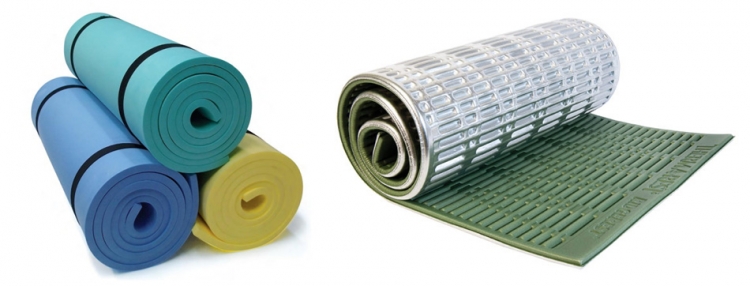
For this reason there are some riders who religiously stand by their closed cell foam sleeping mats. Oftentimes comments will be made about how vulnerable inflated sleeping mats are. Personally I believe avoiding punctures comes down to common sense. The only way you can get a puncture is by placing the mat on top of sharp objects. If you don't do that, you won't get a puncture!
For over 10 years I have used inflatable mats and I have only ever had one puncture. This was due to rolling into camp late, setting up camp in the dark and not seeing a small Matagouri branch which ended up puncturing the mat. However, this was quickly and easily field-repaired with some Aquaseal and a patch. Generally, in New Zealand it is fairly easy to clear a sleeping area free of any debris that will cause punctures. This can't be said for all countries however…
A few years back I remember watching a video by Phil from Motobikin in Australia where he demonstrated his swag sleeping set up. He was a very forthcoming expressing his dislike for inflatable sleeping mats and stuck by his trusty foam sleeping mat. Initially I was surprised to hear this until I did a trip across Australia myself.
I thought our New Zealand Matagouri bushes were ridged and spiky but they are nothing compared to the fiercely ridged shrubs and trees in Australia. Most notably are some of the seed husks that are protected by hard and sharp spikes. These are littered throughout the Australian deserts and would mean an instant puncture for any inflatable sleeping mat.
The worst case I saw was when I camped up on one of the dunes in the Simpson Desert. I found that many of these spiky seed husks were not only scattered over the surface of the sand, but were just under the surface also. It took quite a while to clear an area safe for the inflatable sleeping mat that night.
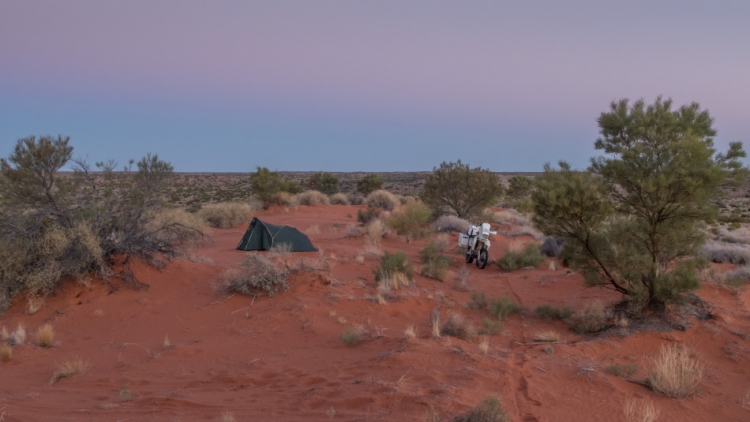
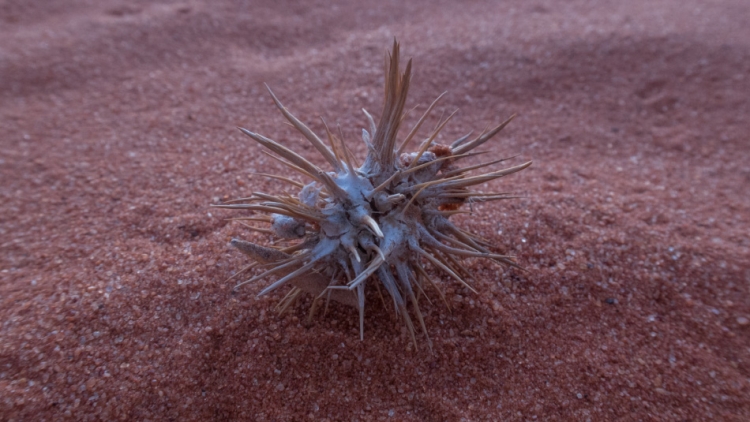
Throughout my Australian trip I managed to avoid a puncture however there was certainly a lot of time spent on campsite prep before laying out the sleeping mat. It was only after this trip that I understood why Phil prefers the closed cell foam mat. The convenience of being able to throw it down anywhere without a care certainly has its plus sides.
We don't really have the same challenges here in New Zealand so inflatable sleeping mats are a good option and definitely the most comfortable. They are certainly my preference for adventure riding and you couldn't pry me off my Exped if you tried!